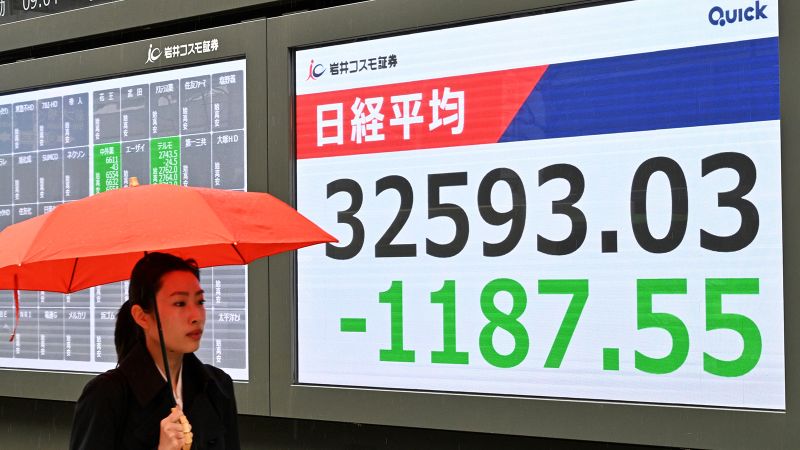DRIVERS across the US have been bemoaning an increase in gas prices in recent times - especially in one major state where costs are sky high. Californian motorists continue to suffer disproportionately at gas stations compared to other states - but it seems these soaring expenses might be “self-inflicted,” instead of mere greed or price gouging from further up the supply chain. An expert, Michael Mische, from the USC Marshall School of Business , recently dived into the data and history behind California being the most expensive state in the US for fuel.
His conclusion is that the state’s high gas prices are the result of directed policies and a litany of regulations, taxes, fees, and costs. Speaking to KTLA , he said: “The data is overwhelmingly compelling. “There is no evidence of price gouging, either by gas station owners or refiners or oil producers in the state - at least widespread.

” Read more Motors News Mische examined some 50 years of gas prices in the state and analyzed what led to spikes and lulls. The study states: “It is uniformly acknowledged that California has the most stringent regulatory environment for oil and gas companies in the world. “Regulatory oversight, irrespective of one’s (political) perspective, is layered into and accumulates throughout the supply chain, ultimately adding to the cost burdens of compliance for oil and gas industry operators, which, in turn, contribute to higher consumer prices at the pump.
” Governor Gavin Newsom has claimed oil companies have been “gouging” the prices for California drivers. Most read in Motors As a result, he has targeted the industry with investigations and legislation aimed at keeping prices in check. He even signed a price-gouging bill two years ago, which he said has avoided severe gasoline price spikes like the historic 2022 spike, according to a spokesperson.
But Patrick DeHaan, head of petroleum analysis at GasBuddy, questions whether price gouging is the real issue in California, considering prices there are so much higher than in other states. DeHaan added: “These costs are only associated with California. “California has done a terrific job chasing [refineries] out of the state and suddenly wondering why they don’t have enough gasoline or why prices skyrocket.
” The decline of the state’s oil production is another reason for the high prices - as California is only ranked seventh in oil production in the US despite having the country’s largest economy by far. California was once the country’s top producer of oil, but now fewer than a dozen refineries will be open by the end of 2025. What’s more, California’s blend of gasoline for vehicles is heavily mandated by environmental policies and isn’t widely manufactured by refineries in places like Texas and Oklahoma .
As a result, the majority of California’s oil comes from the Middle East. Mische added: “California is facing perhaps a severe supply shortage. “Supply has come down faster than demand.
Simple economics will tell you ...
prices will go up.” Gas tax is another hit to customers' wallets, as each year, on July 1, the tax increases, directly raising prices at the pump. Mische said that 2015 was a turning point for the state with the institution of the Cap-and-Trade Program under former governor Jerry Brown.
A strategy to reduce greenhouse emissions, the program “creates a powerful economic incentive for significant investment,” according to the California Air Resources Board. Mische says it simply passes the costs to consumers. Governor Newsom plans to ban new petrol car sales by 2035, focusing on zero-emission vehicles.
While the administration says this goal is on track, Mische is sceptical, arguing it requires major infrastructure upgrades and changes - which could be difficult for lower-income families. Read More on The US Sun With the 2035 deadline approaching, Mische questions whether it’s worth keeping petrol prices low. He thinks consumers should shop around for cheaper petrol and consider hybrid vehicles instead of fully electric ones, as petrol prices are likely to rise further and ultimately put more strain on households.
There are several steps you can take to safely pump gas. Find Your Pump Drive up to a pump, aligning your car’s fuel tank with the nozzle. Look for the fuel indicator arrow on your dashboard or the manual to know which side your gas tank is on.
Pay for Your Gas You can either pay at the pump with a credit/debit card or pay inside. If paying inside, give the attendant your pump number and the amount you want to spend. Open Your Fuel Lid Use the lever or button inside your car to open the gas tank lid, or open it manually if your car doesn’t have a lever.
Unscrew the gas cap. Pick the Right Nozzle Grab the correct nozzle from the pump (regular, premium, or diesel). Insert it securely into your gas tank.
Select Fuel Grade Choose the fuel grade (usually regular, mid-grade, or premium). Check your car's manual for the recommended fuel type. Start Pumping Pull the trigger to begin pumping.
Most nozzles have a lever that locks in place so you don’t have to hold it. Wait for Automatic Shutoff Keep an eye on the pump. It will automatically stop when your tank is full.
You’ll hear a click when this happens. Remove the Nozzle and Close the Tank Carefully remove the nozzle, return it to the pump, and make sure the gas cap is tightly secured. Get Your Receipt If you paid at the pump, decide if you want a receipt.
If you do, print it; if not, finish the transaction. Reset Your Odometer Inside your car, reset the fuel odometer to track your mileage. Usually, turning your car back on will reset it.
Source: AAA.
Technology

Little-known reason for sky-high gas prices revealed – and it’s nothing to do with gas stations or their owners
















